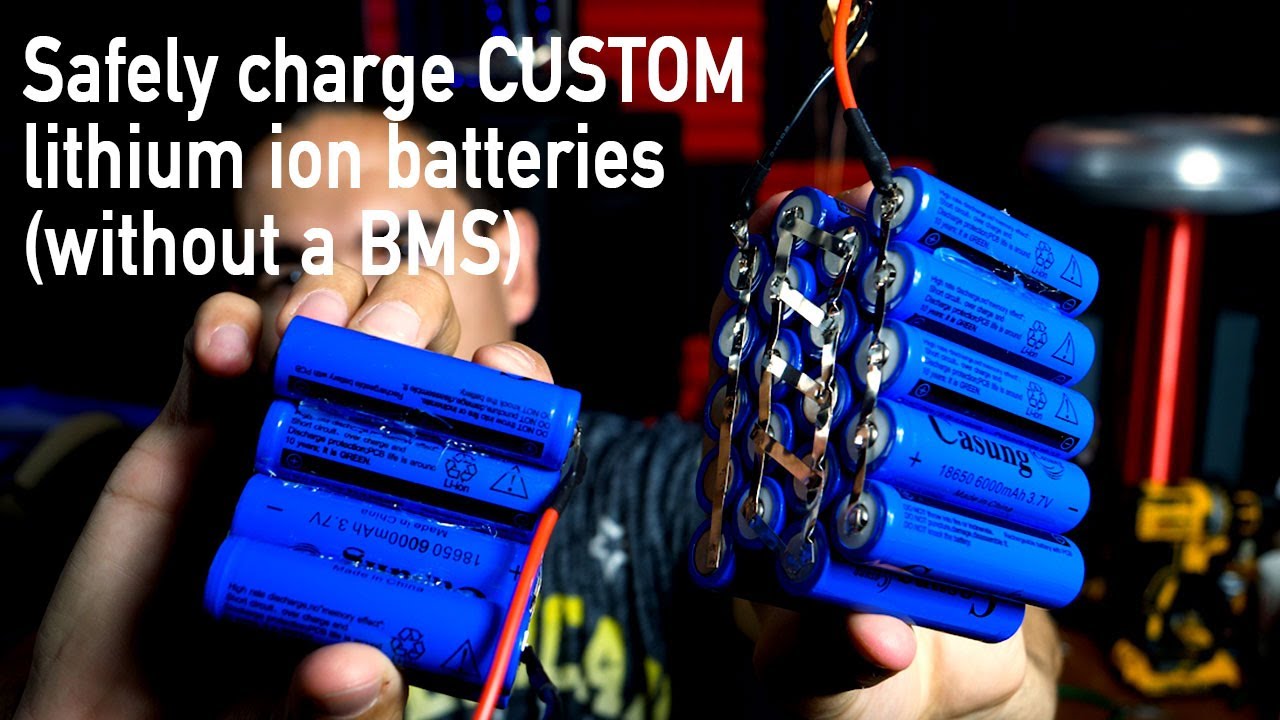How to Charge 18650 Battery Pack: Complete Guide
So you want to know how to charge 18650 battery pack safely?
You’re in the right place.
In this guide, as a professional 18650 battery pack manufacturer, I’m going to show you EXACTLY how to charge your 18650 battery pack without risking damage or safety issues.
(Including the specific chargers, voltages, and techniques that actually work in 2025.)
Let’s dive right in.

What Makes 18650 Battery Packs Different?
Here’s the deal:
18650 batteries aren’t your average AA batteries.
These are lithium-ion cells that pack serious power. Each cell delivers 3.7V nominal voltage and can store anywhere from 2000-3500mAh of energy.
But here’s where it gets interesting:
When you connect multiple 18650 cells together (creating a “pack”), things get more complex.
For example:
- 3S pack = 3 cells in series = 11.1V nominal
- 4S2P pack = 4 cells in series, 2 in parallel = 14.8V with double capacity
And that configuration completely changes how you need to charge them.
The Two-Stage Charging Process (CC/CV)
Let me break this down:
All lithium-ion batteries follow a specific charging pattern called Constant Current/Constant Voltage (CC/CV).
It works like this:
Stage 1: Constant Current (CC)
The charger pumps a steady current into your battery pack. For a 2500mAh cell, you’d typically use 1.25A (half the capacity rating).
Stage 2: Constant Voltage (CV)
Once each cell hits about 4.1V, the charger switches gears. It maintains 4.2V per cell while the current naturally drops off.
Think of it like filling a glass of water. You pour fast at first (CC), then slow down at the top to avoid spilling (CV).
Choosing the Right Charger (This Is Critical)
Listen:
Using the wrong charger is the #1 way people destroy their battery packs.
Here’s what you NEED to look for:
Smart Chargers vs. Basic Chargers
Never use a “dumb” power supply for lithium batteries.
Why?
Because lithium cells need precise voltage control. Even 0.1V too high can cause serious problems.
Instead, invest in a smart charger that includes:
- Automatic voltage detection
- Overcharge protection (stops at exactly 4.2V per cell)
- Temperature monitoring
- Current limiting
Popular options that I’ve tested include:
- Nitecore D4 (for individual cells)
- ISDT Q8 (for battery packs with balance leads)
- SkyRC iMAX B6 (versatile option for various configurations)
Matching Voltage Is Non-Negotiable
This is super important:
Your charger voltage MUST match your pack configuration.
Here’s a quick reference:
- 1S pack (3.7V nominal) → 4.2V charger
- 2S pack (7.4V nominal) → 8.4V charger
- 3S pack (11.1V nominal) → 12.6V charger
- 4S pack (14.8V nominal) → 16.8V charger
Get this wrong and you’ll either undercharge (reducing capacity) or overcharge (creating fire risk).
The Role of Battery Management Systems (BMS)
Here’s something most guides miss:
For any pack with cells in series, a BMS isn’t optional—it’s essential.
A BMS does three critical things:
- Balances cells during charging
- Prevents overcharge of individual cells
- Monitors temperature and shuts down if things get hot
I’ve seen too many DIY packs without proper BMS protection. Don’t make that mistake.
Step-by-Step Charging Process
Now let’s get into the actual charging process.
Before You Start
First, inspect your battery pack:
- Check for physical damage or swelling
- Verify all connections are secure
- Measure individual cell voltages if possible
If any cell is below 2.5V or above 4.2V, stop and investigate further.
During Charging
- Connect properly: Always connect charger to battery BEFORE plugging into wall outlet
- Set correct parameters:
- Voltage: Match your pack configuration
- Current: Start with 0.5C for safety (half the pack’s amp-hour rating)
- Monitor temperature: Batteries should stay barely warm, never hot
- Watch the current: It should gradually decrease during CV phase
Completing the Charge
The charge is complete when:
- Voltage reaches 4.2V per cell
- Current drops to about 3% of initial charge rate
- Charger indicates completion (usually green LED)
Pro tip: For maximum battery life, charge to 4.1V per cell instead of 4.2V. You’ll lose about 10% capacity but double the cycle life.
Temperature: The Silent Battery Killer
Let me be clear:
Temperature management is HUGE for battery safety and longevity.
Never charge:
- Below 0°C (32°F) – causes lithium plating
- Above 45°C (113°F) – accelerates degradation
The sweet spot? 10-30°C (50-86°F).
I learned this the hard way when I left a pack charging in my garage during winter. The cold charging permanently reduced its capacity by 30%.
Series vs. Parallel: Different Rules Apply
This trips up a lot of people:
Series and parallel configurations need different approaches.
Series Packs (Higher Voltage)
Series packs are tricky because cells can become unbalanced over time.
That’s why you MUST use:
- Balance charging (monitors each cell individually)
- Regular voltage checks
- Quality BMS with active balancing
Parallel Packs (Higher Capacity)
Parallel packs are more forgiving because cells self-balance.
But watch out:
- Never connect cells with different voltages in parallel
- Use matched cells (same brand, capacity, age)
- Monitor for hot spots during charging
Common Charging Mistakes (And How to Avoid Them)
I see these mistakes constantly:
Mistake #1: Using laptop chargers
Those deliver constant voltage without current limiting. Recipe for disaster.
Mistake #2: Fast charging every time
Sure, you CAN charge at 2C or higher. But it generates heat and reduces battery life.
Mistake #3: Charging unattended
Even with safety features, always charge where you can monitor.
Mistake #4: Ignoring balance charging
Unbalanced cells = reduced capacity and safety risks.
Advanced Charging Techniques
Once you’ve mastered the basics, try these pro techniques:
Storage Charging
Not using your pack for a while?
Charge to 3.7-3.8V per cell (about 50% capacity) for storage. This prevents degradation during downtime.
Cycle Breaking
New cells benefit from 3-5 gentle charge/discharge cycles at 0.2C to “wake them up” and reach full capacity.
Temperature Compensation
Some advanced chargers adjust voltage based on temperature. At 0°C, they might charge to 4.25V. At 45°C, only 4.15V.
Safety Guidelines That Could Save Your Life
I’m not trying to scare you, but lithium batteries demand respect.
Follow these rules:
- Charge in a fireproof location (metal box, concrete floor)
- Never leave charging unattended overnight
- Keep a Class D fire extinguisher nearby
- Use a smoke detector in your charging area
- Dispose of damaged cells immediately
I’ve been working with these batteries for years without incident. But that’s because I follow these rules religiously.
Real-World Charging Scenarios
Let me share some practical examples:
Example 1: E-bike Battery (13S4P)
- Configuration: 48V nominal, 20Ah capacity
- Charger needed: 54.6V, 2-4A output
- Charging time: 5-10 hours depending on current
- Special consideration: Must have BMS for 13 cells in series
Example 2: Power Tool Pack (5S2P)
- Configuration: 18V nominal, 5Ah capacity
- Charger needed: 21V, 2.5A output
- Charging time: 2-3 hours
- Special consideration: Often includes tool-specific connectors
Example 3: DIY Powerwall (14S100P)
- Configuration: 48V nominal, 250Ah capacity
- Charger needed: 58.8V, 25-50A output
- Charging time: 5-10 hours
- Special consideration: Requires sophisticated BMS and cooling
Maximizing Battery Life Through Smart Charging
Want your batteries to last 1000+ cycles?
Here’s how:
- Charge slowly when possible (0.5C or less)
- Avoid 100% charge for daily use (stop at 90%)
- Never discharge below 20%
- Keep batteries cool during charging
- Balance charge monthly for series packs
Following these guidelines, I’ve got packs from 2019 still delivering 90% of original capacity.
Итоги
Charging 18650 battery packs safely comes down to three things:
- Using the right equipment (smart charger, BMS)
- Following proper procedures (correct voltage, safe current)
- Respecting the technology (temperature limits, safety precautions)
Get these right and your batteries will deliver years of reliable service.
Skip them and you’re playing with fire—literally.
The good news?
Once you understand the fundamentals of how to charge 18650 battery pack configurations properly, it becomes second nature. Just like any other aspect of working with electronics, knowledge and respect for the technology go hand in hand.








